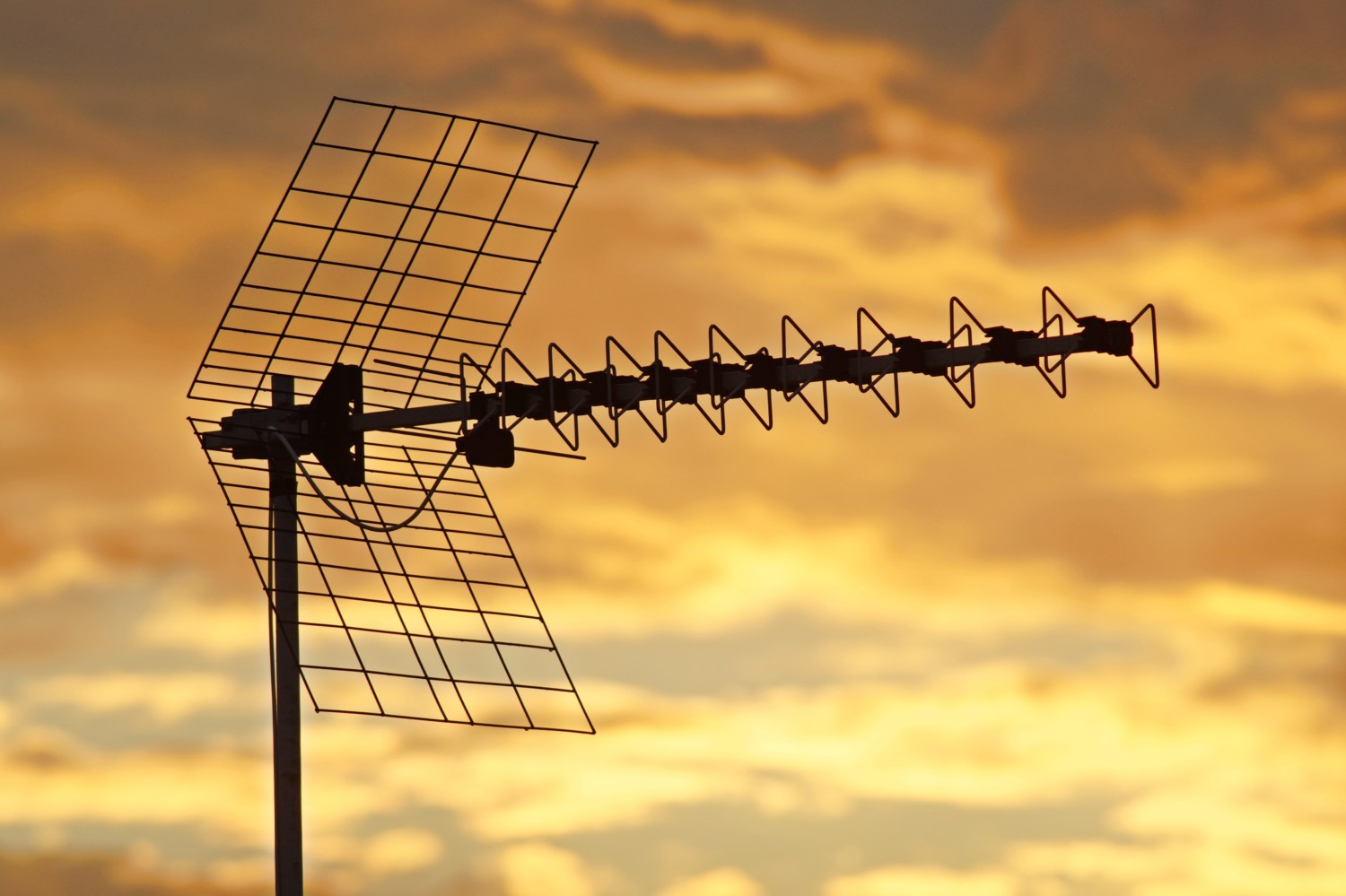The products and services mentioned below were selected independent of sales and advertising. However, Simplemost may receive a small commission from the purchase of any products or services through an affiliate link to the retailer's website.
There are many ways to watch TV these days. You can subscribe to a traditional cable or satellite service, or you might sign up for streaming services like Netflix and HBO Max. Many people have a combination of both, resulting in big monthly bills. If watching TV for free — without missing out on the hit shows and live sporting events you love — sounds good to you, then you’ll want to learn more about over-the-air (OTA) TV.
Read on for everything you need to know about how to access free TV and all of the great shows, movies and live events you can watch.
What Is Over-The-Air TV?
Over-the-air TV is just another way to describe the local broadcast channels that are in your area and the signals they send to antennas within their range. Think of any of the local news stations that cover your locale and that’s who we’re talking about. It’s been estimated that more than 90% of American households are within range of free, over-the-air broadcasters, making this an option for most people reading this story.
Since the earliest days of TV, broadcast signals have been literally sent over the air from transmitters, picked up by antennas and displayed through the TV sets those antennas are connected to.
In the older days, a set of unsightly poles — aka rabbit ears — would often stick straight out of the top of the TV, where they were fastened in as part of the hardware. Those primitive antennas worked similarly to today’s more sophisticated versions, but the modern ones give users much more freedom in setup, installation and display.

What Can You Watch On Over-The-Air TV?
If watching live TV totally free without breaking any laws sounds too good to be true, that’s exactly what companies who provide cable and satellite service would like you to think. While over-the-air TV won’t give you access to cable channels like ESPN, TBS, HGTV or Food Network, it will let you watch perhaps dozens of high-definition channels, including the four major broadcast networks (ABC, CBS, Fox and NBC).
This means you’ll still be able to watch TV’s most popular shows, like “The Bachelor,” “The Masked Singer,” “NCIS” and “This Is Us,” every single week with no recurring fee. You’ll also get the most-watched news programming, like “Today,” “Good Morning America,” “60 Minutes” and “CBS Sunday Morning,” to name just a few.

And if you’re a sports fan, it’s safe to say that many of the most important games you watch every season will be shown on those over-the-air networks, including NFL games through the regular season, playoffs and Super Bowl, major college football matchups, the entire NBA Finals and World Series, weekly PGA Tour events and the Olympics.
That’s not even to mention special events like the Oscars, Emmy Awards, Grammy Awards and Tony Awards, all of which air on over-the-air TV every year.
In addition to ABC, CBS, Fox and NBC, you’ll get PBS and a slew of supplemental channels that cover a wide range of interests and programming types. Common digital channels you’ll get over the air for free include Court TV (for true-crime addicts), Grit (for Western lovers), Laff (for fans of classic sitcoms), Bounce TV (for movies and shows led by Black actors) and PBS Kids (for quality, commercial-free educational programming).

Oh, and if the ability to watch shows on your time is too important for you to let go of, there are many DVRs and other devices on the market that work with over-the-air broadcasting, ranging in price from $50-$200. It sure beats setting up the old VCR to tape your shows like in the ’90s.
What You Need To Watch Free TV
To get started on the path to watching free, over-the-air TV with no recurring fees, there are only two pieces of equipment required: a TV and an antenna. The antennas used to pick up broadcast signals can range from basic to sophisticated.
While a low-cost indoor antenna will work fine for many people, you’ll need to take into account several factors to figure out the type of antenna that’s best suited for your situation. The biggest thing to figure out is how far you are from the broadcasting transmitters in your area.
You can use one of several free mapping tools online that will use your precise location to tell you which networks you should be able to pick up. The ones offered by AntennaWeb and TV Fool are simple to use and show you how far away the various transmitters are from your house. This type of information will help you know which type of antenna to invest in for the best results.

How To Choose The Right Antenna
The most common and affordable type of over-the-air TV antennas are indoor, multidirectional ones. These are the ones that either look like the classic set of rabbit ears or don’t really look like an antenna at all. They are often almost totally flat, with no poles sticking out, and are solid white or black.
This type of antenna is prized for its versatility and aesthetics. Many indoor antennas — especially the ones that cost $25 or less — will give you less than 50 miles of coverage, which spans a radius and is fine for people who live in urban or suburban areas with broadcasters nearby. What they sacrifice in power, they make up for in user-friendliness, as they can often be hidden in plain sight, and the installation process consists merely of hooking them to the TV, setting them on a flat surface and scanning for channels.

On the other hand, people who live in more isolated areas or want to truly harness the power of free over-the-air TV will opt for a directional antenna that can either be installed outdoors or in the attic. These antennas are a little more costly (roughly $40-$100) but offer more power to pick up distant transmitters and more precision in setup.
As the name suggests, directional antennas need to be aimed wherever the desired broadcast signals are coming from. To find them, use one of the map tools we suggested above or try a free smartphone app, like the highly rated Digital TV Antennas, to figure out the optimal direction your antenna should be pointed for cable-free viewing bliss.
Of course, installing a roof- or attic-mounted antenna is much more of a job than an indoor one, as it will require the actual mounting as well as a length of cable that you’ll need to run from the device down to wherever your TV is located.

If you still aren’t sure which type of antenna will work best for your location, the free map tool from AntennaWeb will actually tell you what kind you’ll need in order to pick up each individual channel listed, using a color-coded system. This way, if you see that most networks are within 20 miles or so, but that one channel that you love most is a little farther away, you’ll know to opt for a more powerful option.
No matter which type of antenna you choose, you should find yourself picking up a number of networks as soon as your installation and initial channel scan are complete. If you’re looking for tips to improve the signal strength you’re getting after setup, there are many simple tricks to try, including extra equipment you can add to boost the power of your antenna.
For even more information about OTA TV and which antenna is best for you, visit TheFreeTVProject.org, a consumer education website that provides information about programming available on free over-the-air TV, antenna recommendations and installation tips, and troubleshooting advice. The site was launched in 2022 by The E.W. Scripps Company, Cincinnati-based owner of 61 TV stations in 41 markets. Scripps is also the parent company of Simplemost.
This story originally appeared on Simplemost. Checkout Simplemost for additional stories.


